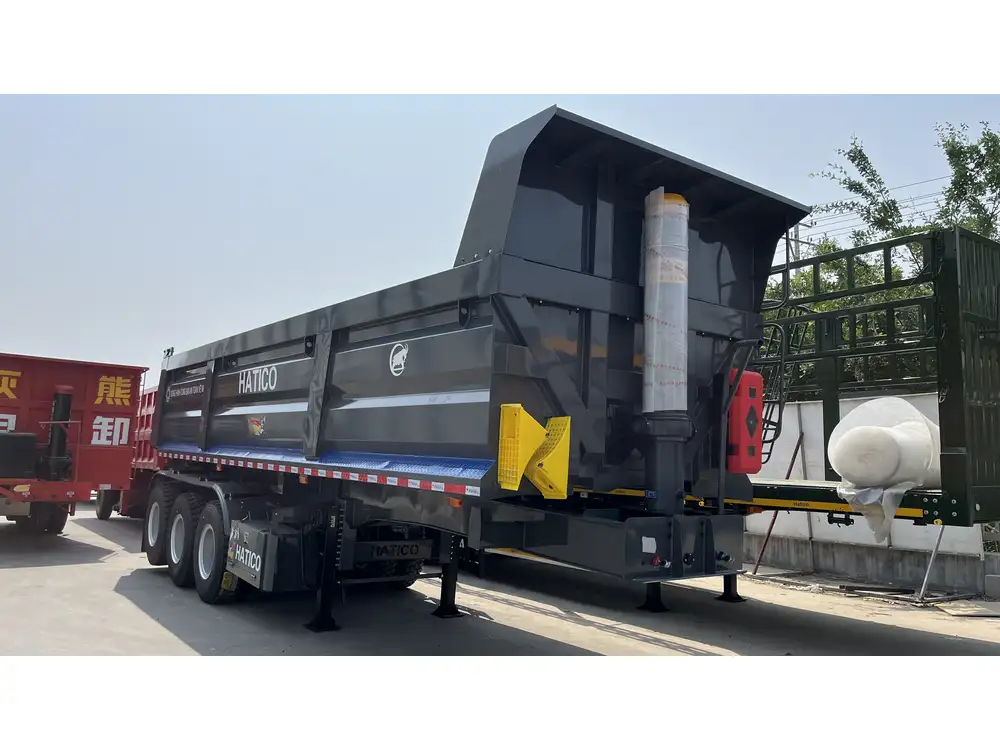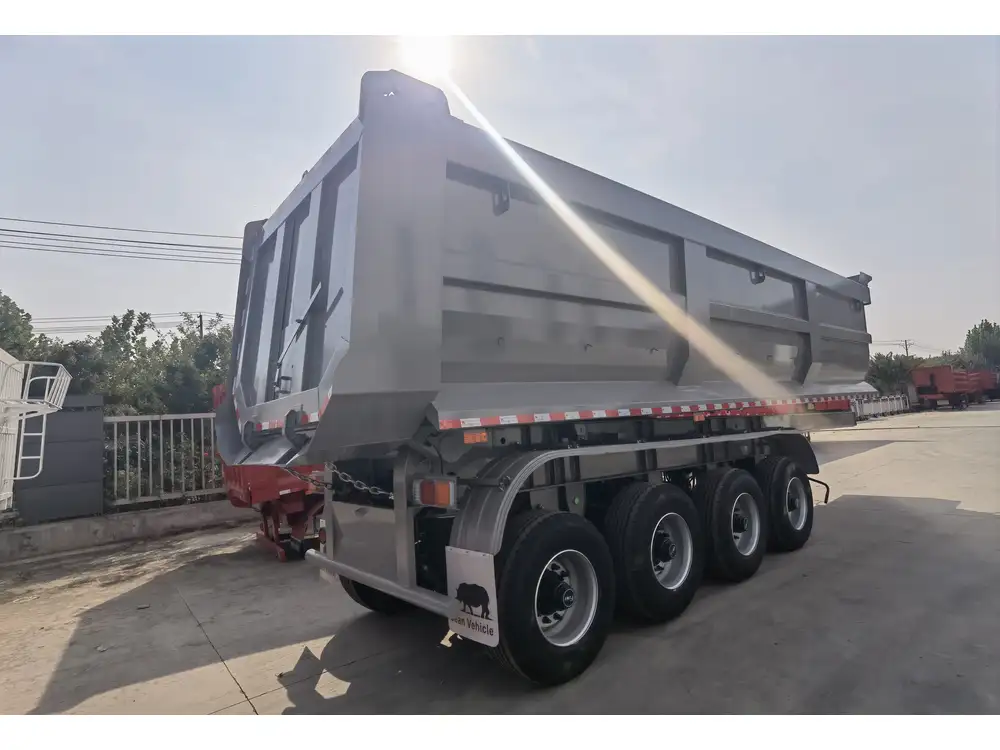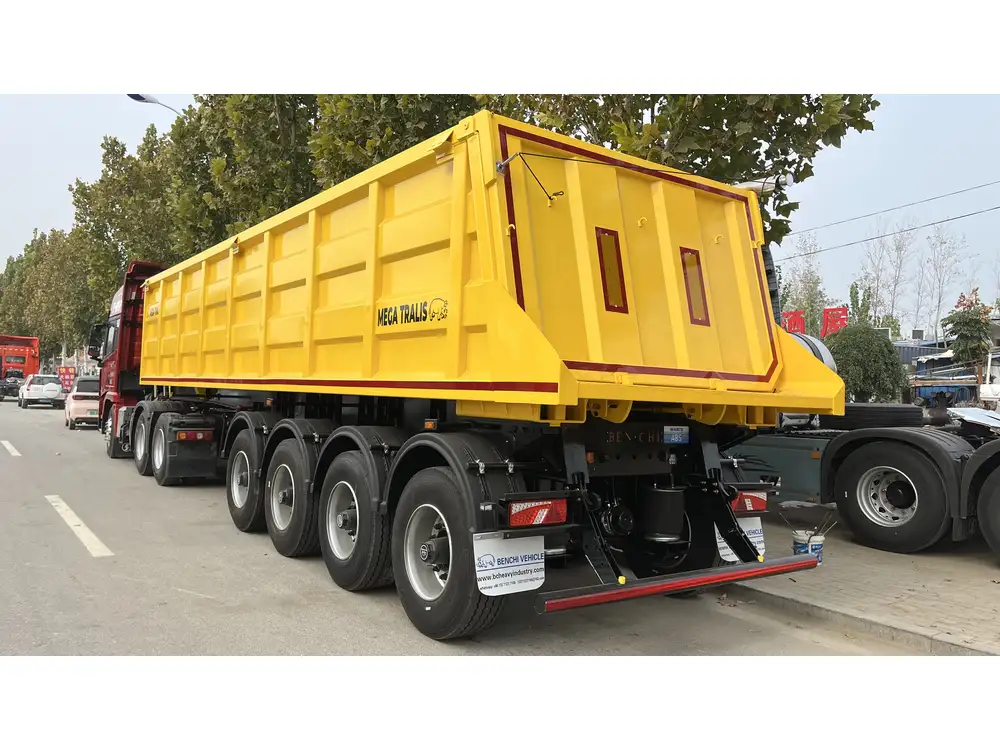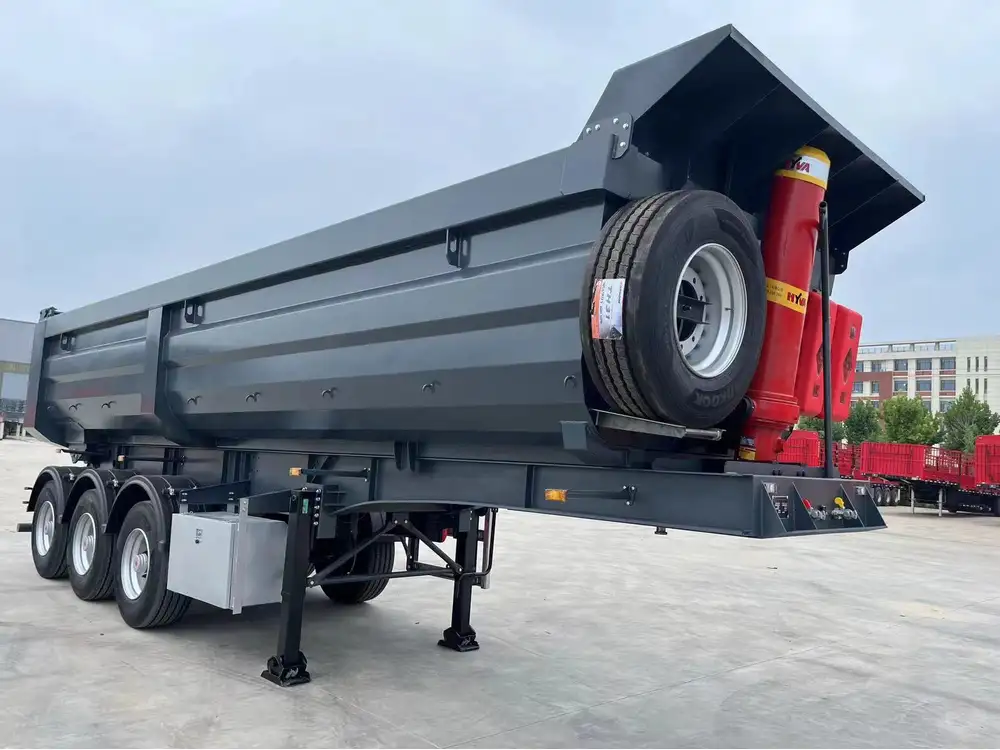Container skeletal semi-trailers serve as indispensable tools in modern logistics and transportation. Designed specifically for intermodal shipping, they provide a robust framework for transporting shipping containers efficiently. In this article, we will delve into the intricacies of container skeletal semi-trailers, exploring their features, benefits, maintenance, and critical factors influencing purchase decisions.
Understanding Container Skeletal Semi-Trailers
Container skeletal semi-trailers are specialized trailers constructed to securely carry shipping containers, primarily through road and rail networks. Unlike traditional flatbed trailers, these skeletal designs remain lighter while ensuring maximum stability and strength.
Key Features of Container Skeletal Semi-Trailers
| Feature | Description |
|---|---|
| Modular Design | Allows for easy adjustment to accommodate various container sizes (20′, 40′, etc.) |
| Lightweight Frame | Constructed from high-strength steel or aluminum, enhancing fuel efficiency and payload capacity |
| Low Deck Height | Provides a lower center of gravity, contributing to better road handling and stability |
| Flexible Loading | Engineered with universal twist locks that secure containers in place, catering to diverse shipping needs |
| Enhanced Durability | Coatings and treatments to withstand harsh environmental conditions, ensuring longevity |

A Closer Look at the Components
Chassis: The backbone of the skeletal trailer, providing a sturdy structure to support containers while minimizing weight.
Axles: Responsible for load distribution and stability, axles come in various configurations (e.g., tandem, tri-axle) suited for different payloads.
Brakes: Featuring advanced braking systems, container skeletal trailers ensure safe stopping under heavy loads, often equipped with air brakes.
Wheels and Tires: Engineered for strength and durability, the wheels and tires are crucial for smooth operation on diverse terrains.
Container Locks: Universal twist locks that are essential for securing containers in place during transport.
Benefits of Using Container Skeletal Semi-Trailers
Utilizing container skeletal semi-trailers offers myriad advantages for freight companies, logistics managers, and independent hauliers alike.
Cost-Effectiveness
One of the most significant financial benefits lies in fuel efficiency. The lightweight construction of skeletal semi-trailers allows for more extensive cargo loads without exceeding weight limits, thereby maximizing profitability over time.

Versatility in Transport
These semi-trailers are designed to carry varied sizes and types of containers, accommodating both standard and high-cube containers. This adaptability serves shippers with diverse shipping needs, making them a vital asset in multi-modal transportation.
Enhanced Accessibility
With their low deck height, container skeletal trailers facilitate easier loading and unloading of containers. This makes them ideal for urban environments where loading zones may have limited vertical clearance.
Improved Handling Characteristics
Due to their lower center of gravity, these trailers exhibit improved stability and maneuverability on roads. This characteristic is particularly beneficial in navigating corners and handling rough terrain.

Maintenance Considerations for Container Skeletal Semi-Trailers
To ensure optimal performance and longevity of container skeletal semi-trailers, we must prioritize maintenance. Here, we outline a comprehensive maintenance schedule:
| Maintenance Task | Frequency | Notes |
|---|---|---|
| Visual Inspections | Weekly | Check for visible damages, rust, or misalignment. |
| Brake Inspection | Monthly | Inspect brake systems and replace worn components. |
| Tire Checks | Monthly | Monitor tread depth and pressure to ensure safety. |
| Lubrication | Every 5,000 miles | Ensure all moving parts are well-lubricated. |
| Suspension System Check | Bi-annually | Examine and repair suspensions to maintain stability. |
Tips to Enhance Longevity
Regular Cleaning: Clean the trailer regularly to prevent corrosion and structural damage.
Avoid Overloading: Ensure that the weight does not exceed the manufacturer’s limit to avoid damaging the frame and axles.
Prompt Repairs: Address any issues promptly to mitigate further damage and maintain safety standards.
Factors Affecting the Purchase of Container Skeletal Semi-Trailers
When considering the investment in container skeletal semi-trailers, multiple factors come into play that can significantly shape the decision-making process.

1. Load Capacity
Evaluate the specific load capacity required for your operations. Skeletal semi-trailers are available in various configurations, and selecting one that meets your operational demands is crucial.
2. Compatibility with Equipment
Ensure compatibility between the skeletal trailer and your existing fleet of trucks and containers. Assess the specifications of your vehicles to guarantee that they can handle the infrastructure effectively.
3. Manufacturer Reputation
Choosing a reputable manufacturer is essential. Investigate the brand’s history, warranty options, and customer reviews. A trusted manufacturer will often provide comprehensive support, including parts availability and service assistance.

4. Regulatory Compliance
Stay informed about local regulations regarding trailer sizes and weights. Compliance helps avoid fines and operational disruptions.
5. Price Considerations
Examine costs closely, factoring in both the initial purchase price and long-term operational costs. Assess the return on investment to determine if the trailer aligns with your business goals.
Comparing Container Skeletal Semi-Trailers with Other Trailer Types
While skeletal semi-trailers excel in specific applications, understanding their position within the broader landscape of trailer types is necessary.
| Trailer Type | Primary Use | Advantages | Disadvantages |
|---|---|---|---|
| Container Skeletal | Intermodal container transport | Lightweight, versatile, efficient | Limited to carrying containers |
| Flatbed Trailers | General freight transport | Versatile use for various cargo types | Susceptible to load shifts and requires tarping |
| Enclosed Trailers | Transporting sensitive or high-value cargo | Protection from the elements | Heavier and may require additional fuel cost |
| Reefer Trailers | Temperature-sensitive cargo | Temperature control | Higher maintenance costs |

The Future of Container Skeletal Semi-Trailers
As the logistics and transportation sectors evolve, container skeletal semi-trailers are poised to adopt new technologies and methodologies that enhance performance and efficiency.
Innovations in Design
Using advanced materials and manufacturing techniques promises the development of even lighter and more durable trailers. Innovations such as carbon fiber and composite materials may become staples in the construction of trailers.
Integration of Smart Technology
The incorporation of IoT technology allows for smarter fleet management. Real-time monitoring of trailer conditions—including temperature, weight, and location—will facilitate more efficient logistics operations.

Sustainability Efforts
With growing concerns regarding environmental impacts, manufacturers are focusing on eco-friendly production processes. Implementing green materials and practices will not only reduce carbon footprints but also resonate with increasingly eco-conscious consumers.
Conclusion
Container skeletal semi-trailers represent the pinnacle of efficiency, flexibility, and performance in the intermodal shipping industry. Their unique features and benefits make them an essential asset for logistics professionals striving for optimization in their operations.
By understanding the operational advantages, maintenance requirements, and the evolving landscape of container transport, stakeholders can make informed decisions that bolster their business capabilities. In a world where logistics is paramount, a container skeletal semi-trailer could well be the keystone of operational success.
Invest in the future of your logistics with our state-of-the-art container skeletal semi-trailers!



